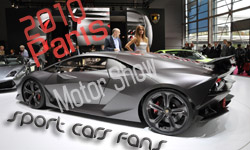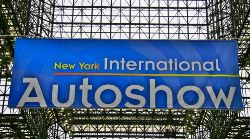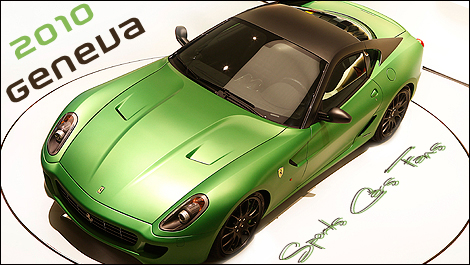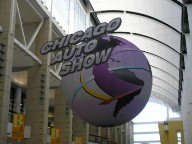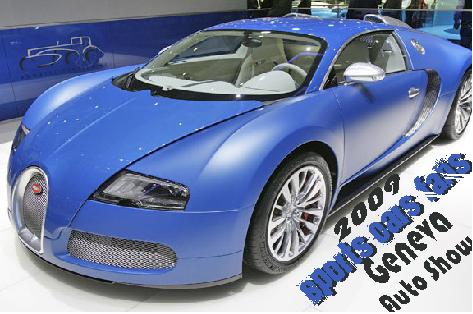2010 Mercury Milan Hybrid

At the LA Auto Show in November, Ford unveiled the updated 2010 Fusion and its hybrid stablemate to considerable fanfare. When we got the chance to drive the Fusion a month later we came away impressed, although some of you found the new, larger three-bar grille even more obnoxious than the original. Since visual appeal is highly subjective, it's fortunate that Ford hasn't killed off the Mercury brand just yet. For a relatively minimal investment, Ford can offer the same mechanical package in a more understated wrapper and the result is this: the 2010 Mercury Milan Hybrid.
Under the skin and between the axles, it's indistinguishable from its Fusion counterpart. But up front, it's an entirely different story. The Milan is equipped with the standard vertical bar grille shared by the rest of the Mercury line-up, but there's more to making a Mercury than a bit of rhinoplasty and a new set of badges.
At the front, the Milan's new nose is a bit more rounded than its predecessor, with the area surrounding the grille now standing out a bit from the bumper and flowing smoothly into the hood. Instead of the power dome found on the Fusion, the Milan has two chamfered edges that extend back to the base of the A-pillars. The new headlights actually appear closer to those found on the previous Fusion, with a taller, narrower stacked appearance compared to the 2009 Milan. At the rear, the shape of the tail-lights is basically the same, although the details of the cluster design are changed. The back bumper is more smoothly integrated, with less visual offset from the rest of the body.
Even with the major refresh for the 2010 model year, the basic profile of the Milan and Fusion hasn't really changed, but that isn't necessarily a bad thing. Because Americans have largely forsaken coupe and wagon body styles for cars over the past two decades, the Milan, like most other mainstream cars, is now only available in a four-door sedan.
The profile may not be the most exciting in the world, but it's clean and handsome. The proportions of the three-box shape and the relatively low roof profile give a sporty overall effect. Unfortunately, the same roof-line that keeps the Milan from looking top-heavy also means that, when equipped with the optional sliding sun-roof, rear seat head-room is significantly degraded for six-footers and up. However, leg-room remains plentiful in the back as well as the front.

In the command position, the Milan has the same interior as the Fusion -- again, a good thing in our experience. Even on the pre-production example we sampled, everything was tightly screwed together with nice soft-touch materials and logically laid out controls. The front seats are very comfortable and supportive, covered in fabric made from 100% post-industrial recycled materials. Unlike many other cars in its class, the Milan's front seat lower cushions aren't excessively short and provide decent thigh support.

The steering wheel has a pleasantly thick leather-wrapped rim with switches for the audio system, cruise control, voice commands and the SmartGauge setup. We kept the SmartGauge in the hyper-miler special "Empower" mode most of the week because of two additional bits of information it shows in addition to the usual battery power flow and instantaneous mileage. One is the EV window, which appears on the power output gauge. Mounted to the left of the battery power flow, the gauge shows the total drivetrain power output and also shows a floating green window representing the power range where the car can operate in EV mode. If the current output is above this window, backing off the gas pedal can bring the power level down and when you get into the designated window, the engine shuts off. To the left of the power gauge is the accessory power gauge, which reflects the amount of power being consumed by accessories such as the headlights, heat and the window defogger.
Our first exposure to the Fusion Hybrid two months ago was in the spiritual home of the hybrid: Hollywood, CA. So. Cal. is the ideal environment for gas-electric vehicles and EVs, with its temperate weather and lots of stop-and-go driving. Back home in Michigan it's a very different situation. On the West Coast, it's not an unreasonable prospect to drive around the majority of the time without having to use such auxiliary systems as heat, window defoggers, wipers and even headlights. Someone serious about extracting every last ounce of power from a gallon of gas could do so comfortably in California.



This is not the case when temperatures dip down to 10 degrees. When the windows are frosted over and just breathing fogs the inside of the glass, there's no option outside of running the heat. When that happens on a cold dark morning, that accessory power gauge starts to climb and EV mode is all but impossible to achieve until the engine warms up. As a result, matching the 43 mpg we got driving in Hollywood is impossible. Once the engine and interior heat up, however, it's not hard to get the engine to shut off at cruising speeds up to 47 mph. Over a week of mostly city driving, we averaged a still impressive 29.4 mpg with the Milan -- about 2.4 mpg more than we got in similar conditions with the Camry hybrid a couple of weeks before -- but a far cry from our earlier result.
Compared to the Toyota, the Milan also has an extra 1.4 cu-ft of trunk space to net 12 cu-ft. The Milan also has excellent dynamic capabilities for a mainstream mid-size sedan. Even with the low rolling resistance tires on the hybrid, the car never feels squirrelly like the Honda Civic hybrid and the steering of the Milan is well weighted and provides good feedback.

The day after our tester arrived, four inches of fresh snow blanketed our Michigan outpost, so we went to a nearby empty parking lot to sample the electronic stability control. The Continental-supplied brake system performed admirably in the fresh snow, allowing the Milan to track wherever the wheel was pointed with the combination of engine and brake control seamlessly adjusting the torque at each corner. There was no annoying beeping (do you hear that Toyota?) or kick-back in the steering. The flashing warning lamp was the only indication that the ESC was active.
Overall, Ford's hybrid system is more than just an admirable effort. It has the smoothest operation of any of the systems that have passed through the AutoblogGreen Garage, and drivers will have a hard time detecting the transitions between the engine running and the switch to EV mode. Cruising on the highway with the radio off, the Milan is remarkably free of wind or road noise and Ford offers a choice of flashy or subdued faces on an excellent mid-size hybrid sedan, so what's not to like? Aside from wishing an automaker would offer a station wagon this size, we really have only one complaint, the price.

The Milan hybrid starts at $27,500 and our test example totaled out at $33,735, including the nav system, up-level Sony audio, moon-roof, blind spot detection and rear camera. The navigation and telematics is easily the best we've tried from any automaker, but the base price of the hybrid is certainly steep and clearly a function of Ford being reluctant to sell the car at a loss in these difficult times. It's about $1,000 more than a Camry hybrid, although it comes standard with 17-inch aluminum wheels, fog-lights and satellite radio, which combined add $1,500 to the Toyota.
Ford recently crossed the 60,000 hybrid sales threshold, which means that the company's eligibility for federal tax credits is soon being phased out. If you pick up a Fusion or Milan before the end of March 2009, the IRS will give you $3,400 back, after which the credit is cut in half for the next six months. After October it goes to just $850 and in April 2010 it's gone altogether. Toyotas and Hondas are no longer eligible for those tax credits.
As good as the 2010 Mercury Milan hybrid is, it makes the case that Ford VP Derrick Kuzak outlined last year when announcing EcoBoost. When the cost of various fuel saving technologies is factored in, the payback period for hybrids are by far the longest, with diesels being shorter and then technology like EcoBoost being the shortest. If it were our money, the Fusion/Milan we want would be powered by the combination of a 1.6L EcoBoost four with dual-clutch transmission and start/stop that we saw in the Lincoln Concept C at this year's Detroit Auto Show. That powertrain would virtually match the 40-mpg fuel consumption potential of this hybrid at a considerably lower cost and no reduction in trunk space. Ford could probably offer that car in the low $20k range, virtually matching the VW Jetta TDI in price. But that car doesn't exist. Yet.
